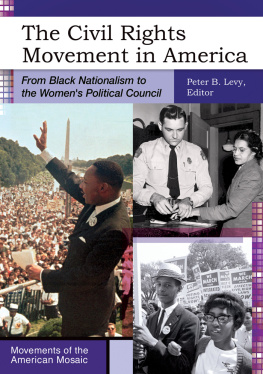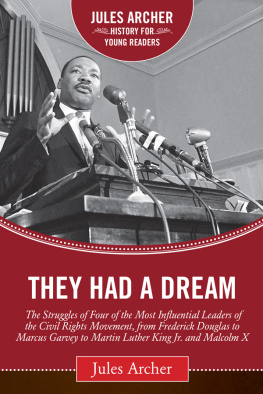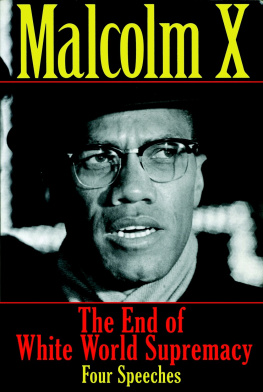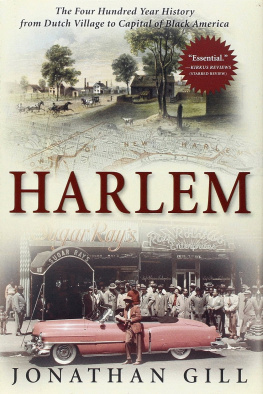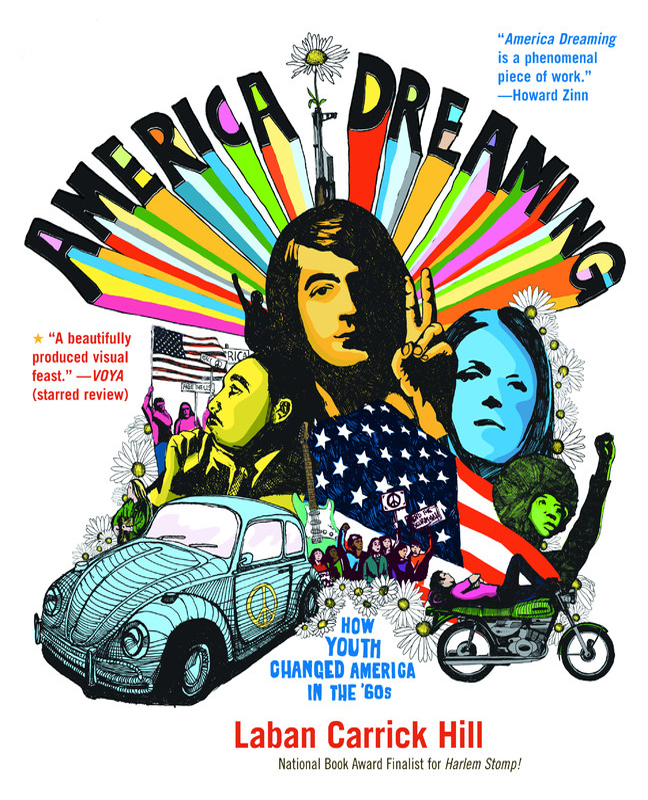Text copyright 2007 by Laban Carrick Hill
All rights reserved.
Little, Brown and Company
Hachette Book Group
237 Park Avenue, New York, NY 10017
Visit our website at www.HachetteBookGroup.com.
www.twitter.com/littlebrown
First eBook Edition: June 2009
ISBN: 978-0-316-07883-2

Also by Carrick Hill: Harlem Stomp!
For Elise, always and forever
Without Elise Whittemore-Hill and her support, insight, and inspired design, this book would not be what it is today. I would also like to thank Jennifer Hunt for her superb editing, Susan Cohen for her outstanding support and advocacy, Megan Tingley for recognizing I might have something, and Christine Cuccio for her unerring copy-editing.

W hether you call them the Boomer Generation or the Pepsi Generation, those who came of age in the 60s make up the largest and most influential generation ever in American history. Wilder than Gen X, more activist than Gen Y, these youths changed their world like no other generation has before or since. Their music, their language, and their style still define our culture today. America Dreaming is more than the story of a youth movement. Its the story of the power and optimism of young people building a world in their own image. Through the lens of pop culture and rock-and-roll, this book tells the story of teens and twenty-somethings who caused a seismic change in American culture.
The full impact of the 60s on American culture has been obscured by the media. When we think of this era, we picture an age of sex, drugs, and rock-and-roll radicalism. We imagine a period of extremes and excess. This image has been reinforced not only by filmssuch as the rockumentary Woodstockbut also by memoirs celebrating campus protests of the Vietnam War. In truth, only a small minority of 60s teenagers were hippies and/or campus radicals. The real story of the 60s depicts the largest generation in American history coming of age in an unprecedented period of economic growth, and questioning the very basis of our government, culture, and economy. This is the story of young African Americans, young Latinos, young women, young Native Americans, and simply young Americans who woke up one day and decided they wanted something more.
These were teens who dared to dream of an America that was fair and just. America Dreaming tells their story.
LCH
Romper, bomper, stomper, boo. Tell me, tell me, tell me do. Magic mirror, tell me today. Did all my friends have fun at play? I see Natalie, I see David, I see Ella
Mirror Song from Romper Room

PRESCHOOL FOR THE BOOMER GENERATION
M iss Nancy, the host of the childrens television show Romper Room, sang this sugary little tune at the end of each episode. She sang it to you if you were part of the Boomer Generation. This generation represented an extra -ordinary spike in birthrates that began in 1945, at the end of World War II, and continued until 1964. First appearing on air in 1954, Romper Room showed just how much America had changed from a country at war to one of rebirth. The half-hour show essentially televised a preschool class in which Miss Nancy would read from books to seven or eight kids on the set and teach the alphabet, manners, and values in a gentle way. Like this popular show, America was all about raising children. The idealized Romper Room world marked the degree to which the country had changed from a society in crisis to a community in renewalor rather, a community preoccupied with raising children. In short, 1950s America became essentially one giant playpen.

The only massive public project begun in the 50s was the building of the interstate. This put people in their own cars and made it possible for them to drive across the country without using public transportation such as buses, trains, and airplanes.
BOOMERS BY THE NUMBERS
- 80 million children born between 1946 and 1964
- By 1959, more than 50 million children (30 percent of the population) under the age of 14 lived in the United States.
- There were as many children in 1959 as there were people living in the United States in 1881.
- By 1965, 41 percent of all Americans were under the age of 20. (In 2000, 25.7 percent of the U.S. population was under 18.)
After fifteen years of decline and suffering that began on Black Tuesday, October 29, 1929, with the stock market crash, continuing through the 1930s with the Depression and mass unemployment, and morphing into the horror of World War II, America was ready for prosperity. Winning the war raised America to global supremacy, and the country hungered to taste the fruits of this success. Americans were tired of the social and political demands of the previous decade and a half. They were desperately eager for the American Dreammarriage, children, good jobs, a home. The peace dividend of winning the war made all this possible to a large percentage of the population for the first time in history. America was no longer in a depression, and the economy was no longer pouring every cent into the war effort.
Your future is great in a growing America. Every day 11,000 babies are born in America. This means new business, new jobs, new opportunities.
sign in the New York City subway in the 1950s
The U.S. government helped the boom along by providing returning soldiers with the Servicemans Readjustment Act, commonly known as the G.I. bill, which Congress passed in 1944. This program offered veterans unemployment compensation, medical benefits, loans to start new businesses and buy a home, and tuition benefits for higher education. The result was that the government infused the economy with hundreds of millions of dollars just when it was needed most. This spurred an economic boom, which led to the largest expansion in American history. With the U.S. government directing public funds into private spaces and private goods, not public servicessuch as dams, rural electrification, executing the war, and other large government projectsas was done in the previous decades, there was a profound change in the American psyche. The result was that all segments of society were improving their positions. This improvement was not in relation to one another, but in relation to every persons past and that of his or her family. This meant that everyone in the country was doing at least a little better than they had before. In the beginning, that was enough to fuel a kind of euphoria not seen previously in America. For the first time it appeared possible that the country would achieve that ideal of the city on a hill that was first imagined by the early Puritans. This new economic security fueled a confidence in the future and a dream that America could truly become the first utopian society.


